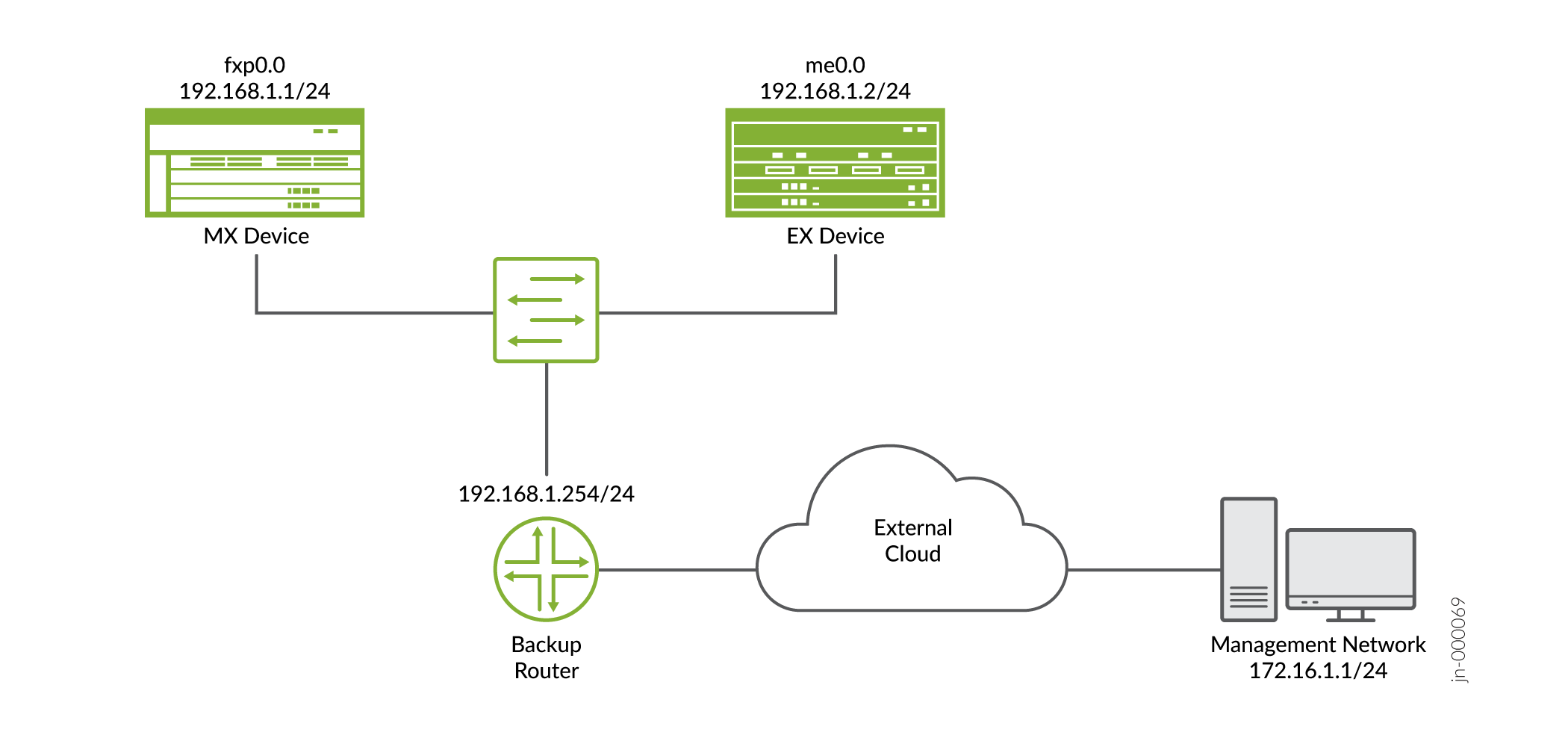Configure a Backup Router
To add a backup router to your device, configure the backup-router or
the inet6-backup-router statement at the [edit system]
hierarchy level.
You (the network administrator) can use the backup router to reach the network while
loading, configuring, and recovering the router or switch without installing a default
route in the forwarding table. Include the optional destination option
and specify an address that is reachable through the backup router. Use the address
format network/mask-length. This
configuration supports both IPv4 and IPv6 addresses. The prefix of the destination
address cannot overlap with the destination prefix learned from the routing protocol
process (rpd).
If the backup router configuration has multiple static routes that point to a gateway from the management Ethernet interface, you must configure prefixes that are more specific than the static routes.
For example, if you configure the static route 172.16.0.0/12 from the management Ethernet interface for management purposes, you must specify the backup router configuration as follows:
set system backup-router 172.29.201.62 destination [172.16.0.0/13 172.16.128.0/13]
Any destinations defined by the backup router are not visible in the routing table. They are only visible in the local forwarding table when the rpd is not running.
On systems with dual redundant Routing Engines, the backup Routing Engine's reachability
through the private management interface is based only on the functionality of the
backup-router configuration. It is not based on whether the rpd is
running. On both Routing Engines, the backup-router statement adds the
destination prefix upon bootup. On the primary Routing Engine, a static route requires
the rpd to be running before the static route installs the destination prefix to the
routing and forwarding tables.
Active routes and more specific routes take precedence over destination prefixes defined
with the backup-router statement.
Configure a Backup Router Running IPv4 for Routers
In the example shown in Figure 1, the backup router is the default gateway of the management network.
As required, the backup router address is reachable and directly connected to the management interfaces on the two routing devices (fxp0 and me0).

Optionally, instead of configuring the backup router at the [edit
system] hierarchy level, you can use a configuration group, as
shown in this procedure. This is a recommended best practice for configuring the
backup router, especially if the device has dual Routing Engines. This procedure
uses groups called re0 and re1 as an
example.
To configure a backup router running IPv4:
Configure a Backup Router Running IPv6 for Routers
To configure a backup router running IPv6:
Configure a Backup Router for SRX Series Firewalls
This procedure describes how to manage two SRX Series Firewalls in a chassis cluster mode using a backup router configuration. The backup router address is reachable and directly connected to the management interfaces on the SRX chassis cluster (fxp0).
When you configure the backup router for SRX Series Firewalls in chassis cluster
mode, the backup router configuration facilitates the management access on the
backup node only. You enable access to the primary node through the routing on
the primary node. When you configure the backup router, Junos OS injects a route
into the forwarding table on the secondary node. You cannot view the routing
table on the secondary node since the routing subsystem does not run on the
secondary node. This example uses groups node0 and
node1.
